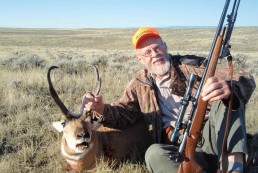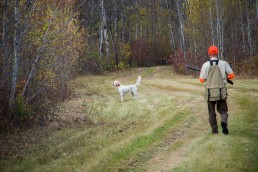The .270: The Right Cartridge for All Seasons
SHARE THIS POST
By the time you read this I will be 70, and hopefully still hunting and loving every minute of it. Over the course of many decades I have had the opportunity to fire rifles chambered in a plethora of calibers—most were sensible game-stoppers, some made very little sense at all. Back in 1971, I chose the .270 Winchester to be my go-to hunting round and I have never been sorry.
First developed and announced in 1925, the gun gurus at Winchester debuted their new offering in the bolt-action Model 54 rifle. Flat shooting and powerful, it soon caught the attention of the hunting and shooting fraternity. At the time it offered better long-range potential than any other cartridge suited for big game. As a result, it has been chambered in the rifles of almost every manufacturer throughout the world.
My choice was the Model 70 Winchester topped by a K-4 Weaver telescopic sight. If this sounds familiar to some of the older shooters, this is that “Jack O’Connor special.”
Jack O’Conner was a famous gun writer, and used a similar rifle to take most mid-sized big-game animals. For the really big ones that could bite back he relied on the .375 Winchester—not a bad combination.
The .270’s 130-grain, spitzer bullet was considered by many to be adequate for most North American big game. But bullets were not constructed as well in those early days and the 130-grain bullet moving at 3,100 fps often blew up on impact and resulted in wounded game that ended up escaping.
To remedy the situation, Winchester brought out a 150-grain load moving along at a reduced speed of about 2,600 fps. When this did not garner as much attention among those who were looking for a good deer load, Winchester upped the ante to a 150-grain load of 2,800 fps, which proved to be a fine game-killer for most animals.
Are you enjoying this post?
You can be among the first to get the latest info on where to go, what to use and how to use it!
Today there are so many fine .270 bullets on the market, both for handloaders as well as in the factory loads, that it would be difficult to find a “bad” loading. And Barnes, Nosler, Hornady and Remington’s iconic Core-Lockt offer outstanding performance at reasonable shooting distances.
Like so many other young readers of the day then, I was enamored with O’Connor’s adventures and made my purchase through the now-defunct Parker Brothers catalog. Since the 1968 gun control law was in effect I had it transshipped to Jaqua’s Fine Guns in Findlay, Ohio, filled out my form 4473 and went home with my shiny new rifle.
While I still am enamored with my .270, I recognize that there are other very good rifle/cartridge combinations for the Midwestern hunter. Who could dispute the legendary .35 Remington or the venerable .30-30 Winchester chambered in Marlin or Winchester lever-action rifles. In fact, if I were to choose the very best all-around cartridge for North American game I probably would have to say it is the .30-06, another old-timer. But I would place the .270 right next to it when loaded with tough bullets such as the 150-grain Nosler Partition or the 150-grain Barnes SXT. Both are no-nonsense rounds that offer deep penetration and controlled expansion.
Three years ago I dropped a black bear with one shot from a 150-grain Nosler, and just this year I took an antelope at 218 yards and a mule deer at 200 yards with Hornady 130-grain handloads. This is pretty impressive performance from a cartridge that is over 90 years old.
So, this is the testimony of an old hunter shooting an old cartridge in the middle of a “big-bang-boom” of the likes of which I have never seen. The 7mm STW, .300 Dakota, .26 Nosler, .6.5-300 Weatherby Magnum and the .30-.378 are all fine cartridges for their intended purposes. But I’ll stick with my .270. It’s just a lot friendlier on the shoulder and the pocket book.
Did you enjoy this post?
You can be among the first to get the latest info on where to go, what to use and how to use it!
John Bennett
John Bennett is a retired history teacher, historical re-enactor, father and grandfather. As a four-season outdoorsman, his passion is waterfowl hunting and fishing for smallmouth bass. He lives in Ohio and spends quite a bit of time in his primitive log cabin, which he built.

